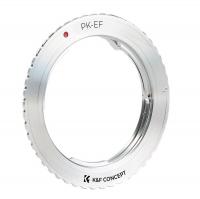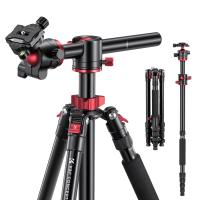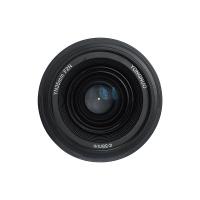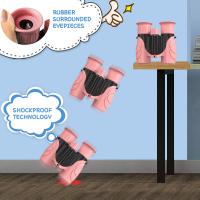How Did Robert Hooke Invent The Microscope ?
Robert Hooke did not invent the microscope, but he made significant contributions to its development. In the 17th century, Hooke improved upon existing designs and built his own compound microscope. He is best known for his book "Micrographia," published in 1665, where he documented his observations using the microscope. Hooke's work helped popularize the use of microscopes and laid the foundation for further advancements in microscopy.
1、 Early Life and Education of Robert Hooke
Robert Hooke, an English scientist, is credited with inventing the microscope in the 17th century. Born on July 18, 1635, in Freshwater on the Isle of Wight, Hooke showed an early interest in mechanics and engineering. He attended the Westminster School, where he excelled in mathematics and drawing. Hooke's talent caught the attention of the renowned scientist Robert Boyle, who became his mentor.
Hooke's invention of the microscope was a result of his curiosity and desire to explore the world beyond what the naked eye could see. He began experimenting with lenses and light, building upon the work of previous scientists such as Galileo Galilei and Antonie van Leeuwenhoek. Hooke's microscope consisted of a series of lenses that magnified objects, allowing for detailed observations.
In 1665, Hooke published his groundbreaking book, "Micrographia," which contained detailed illustrations and descriptions of various objects observed under the microscope. This publication not only showcased Hooke's invention but also provided valuable insights into the microscopic world. Hooke's microscope enabled him to observe and document the structure of various organisms, including insects, plants, and even cells.
However, it is worth noting that Hooke's invention of the microscope was not without controversy. Some argue that Hooke may have borrowed ideas from other scientists and instrument makers of the time. Additionally, there is evidence to suggest that Hooke's microscope was not as powerful as later microscopes developed by his contemporaries.
In conclusion, Robert Hooke's invention of the microscope was a significant milestone in the history of science. His curiosity and ingenuity led him to create a device that revolutionized our understanding of the microscopic world. While there may be some debate surrounding the extent of Hooke's contributions, there is no doubt that his work laid the foundation for future advancements in microscopy.

2、 Hooke's Contributions to Microscopy
Robert Hooke, an English scientist, made significant contributions to the development of the microscope in the 17th century. While he did not invent the microscope itself, he played a crucial role in improving its design and popularizing its use for scientific exploration.
Hooke's most notable contribution to microscopy was his publication of "Micrographia" in 1665. This groundbreaking work detailed his observations using a compound microscope, which he had refined and improved upon. Hooke's microscope featured a stronger lens system and better illumination, allowing for clearer and more detailed observations of microscopic specimens.
In "Micrographia," Hooke described and illustrated various objects he observed under the microscope, including insects, plants, and even the structure of cork. His detailed drawings and descriptions provided the scientific community with a wealth of new information about the microscopic world. Hooke's work not only expanded our understanding of the natural world but also inspired other scientists to further explore the realm of microscopy.
While Hooke's contributions to microscopy were significant, it is important to note that he built upon the work of earlier scientists. The invention of the compound microscope is generally attributed to Dutch scientist Zacharias Janssen and his father Hans in the late 16th century. However, Hooke's improvements and his publication of "Micrographia" helped popularize the use of the microscope and brought it to the attention of a wider audience.
In recent years, there has been some debate about Hooke's role in the invention of the microscope. Some historians argue that Hooke's contributions have been overshadowed by his contemporary, Antonie van Leeuwenhoek, who made significant advancements in single-lens microscopes and was the first to observe microorganisms. However, it is widely acknowledged that Hooke's work in improving the compound microscope and his publication of "Micrographia" were instrumental in advancing the field of microscopy and laying the foundation for future discoveries.

3、 Design and Development of Hooke's Microscope
Robert Hooke, an English scientist, is credited with inventing the microscope in the 17th century. Hooke's invention of the microscope was a significant milestone in the field of microscopy and had a profound impact on scientific research.
Hooke's microscope design and development were based on the earlier work of Dutch scientist Antonie van Leeuwenhoek, who had created simple microscopes. Hooke improved upon these designs and developed a compound microscope, which consisted of two lenses that magnified the specimen. He also introduced an adjustable stage and a light source to enhance the viewing experience.
Hooke's microscope was made using a combination of brass, glass, and wood. The lenses were carefully ground and polished to achieve the desired magnification. The microscope had a tube with a lens at one end and an eyepiece at the other, allowing the viewer to observe the specimen in detail.
Hooke's microscope was not only a technological advancement but also a scientific breakthrough. He used it to make numerous important discoveries, including his observations of cells in cork, which he described as "cells" due to their resemblance to small rooms or cells in a monastery. This discovery laid the foundation for the field of cell biology.
In recent years, there has been some debate about the extent of Hooke's contribution to the invention of the microscope. Some argue that Hooke's microscope was not entirely original and that he built upon the work of his predecessors. However, regardless of the origins of the microscope, Hooke's design and development played a crucial role in popularizing its use and advancing scientific knowledge.
In conclusion, Robert Hooke's invention of the microscope was a significant achievement in the history of science. His design and development of the compound microscope paved the way for groundbreaking discoveries and revolutionized the field of microscopy. Despite the ongoing debate about the origins of the microscope, Hooke's contribution remains undeniable.

4、 Observations and Discoveries Made with Hooke's Microscope
Robert Hooke is credited with inventing the microscope in the 17th century. His invention revolutionized the field of microscopy and paved the way for countless scientific discoveries. Hooke's microscope was a significant improvement over previous models, allowing for higher magnification and clearer images.
Hooke's invention was inspired by the work of earlier scientists, such as Galileo Galilei and Antonie van Leeuwenhoek, who had developed rudimentary microscopes. Hooke built upon their designs and made several key innovations. He used a compound microscope, which consisted of two lenses that magnified the specimen. Hooke also improved the illumination system by introducing a mirror to reflect light onto the specimen, enhancing visibility.
With his microscope, Hooke made numerous observations and discoveries that greatly advanced our understanding of the natural world. In his book "Micrographia," published in 1665, Hooke documented his observations of various objects under the microscope. He examined a wide range of specimens, including insects, plants, and even human tissues. Hooke's detailed illustrations and descriptions provided valuable insights into the microscopic world.
One of Hooke's most significant discoveries was his observation of cells in cork. He coined the term "cell" to describe the small compartments he observed, which resembled the cells of a monastery. This discovery laid the foundation for the field of cell biology and had a profound impact on our understanding of living organisms.
In recent years, there has been some debate about the extent of Hooke's contributions to the invention of the microscope. Some argue that Hooke may have borrowed ideas from his contemporaries or even failed to give proper credit to others. However, it is widely acknowledged that Hooke's microscope was a significant advancement in microscopy and played a crucial role in scientific progress.
In conclusion, Robert Hooke invented the microscope by building upon the work of earlier scientists and making several key innovations. His microscope allowed for higher magnification and clearer images, leading to numerous observations and discoveries. Hooke's most notable contribution was his observation of cells in cork, which revolutionized our understanding of living organisms. While there may be some debate about the extent of Hooke's originality, his invention undeniably had a profound impact on the field of microscopy and scientific exploration.








































